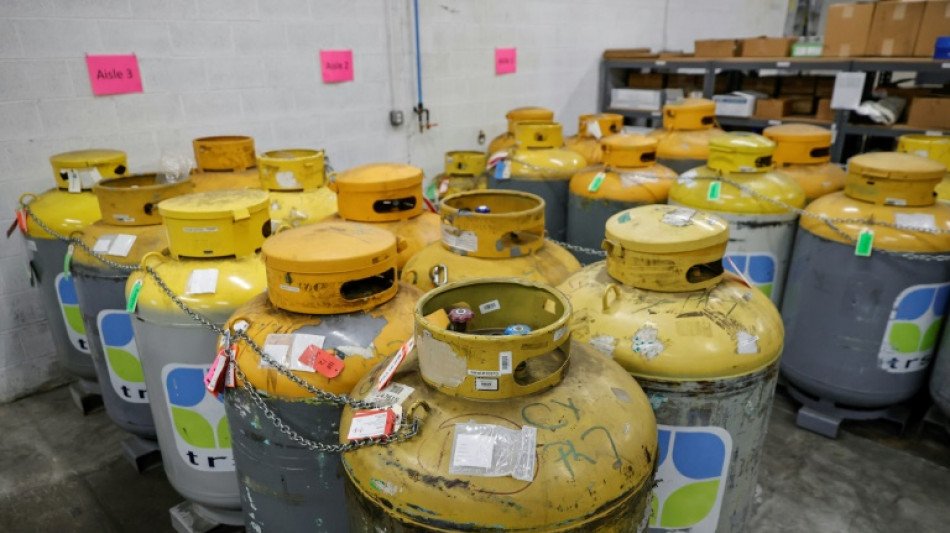
-
 Erasmus' ingenuity sets South Africa apart from the rest
Erasmus' ingenuity sets South Africa apart from the rest
-
Asaji becomes first Japanese in 49 years to win Singapore Open

-
 Vingegaard says back to his best after Japan win
Vingegaard says back to his best after Japan win
-
Philippines evacuates one million, woman dead as super typhoon nears
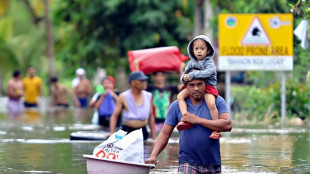
-
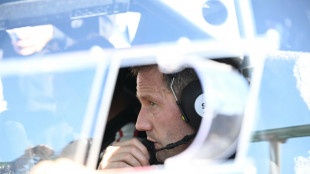 Ogier wins Rally Japan to take world title fight to final race
Ogier wins Rally Japan to take world title fight to final race
-
A decade on, survivors and families still rebuilding after Paris attacks
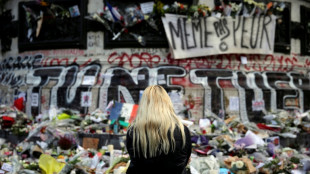
-
 Russia's Kaliningrad puts on brave face as isolation bites
Russia's Kaliningrad puts on brave face as isolation bites
-
Philippines evacuates hundreds of thousands as super typhoon nears
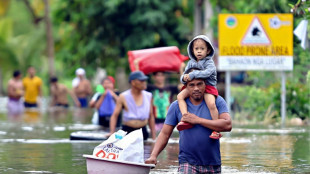
-
 Syrian president arrives in US for landmark visit
Syrian president arrives in US for landmark visit
-
Cyndi Lauper, Outkast, White Stripes among Rock Hall of Fame inductees

-
 Fox shines in season debut as Spurs down Pelicans, Hawks humble Lakers
Fox shines in season debut as Spurs down Pelicans, Hawks humble Lakers
-
New Zealand edge West Indies by nine runs in tense third T20
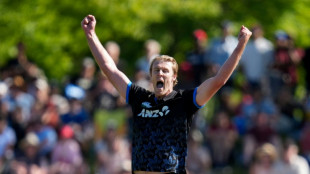
-
 Messi leads Miami into MLS playoff matchup with Cincinnati
Messi leads Miami into MLS playoff matchup with Cincinnati
-
Ukraine scrambles for energy with power generation at 'zero'

-
 India mega-zoo in spotlight again over animal acquisitions
India mega-zoo in spotlight again over animal acquisitions
-
Messi leads Miami into MLS Cup playoff matchup with Cincinnati

-
 Tornado kills six, injures 750 as it wrecks southern Brazil town
Tornado kills six, injures 750 as it wrecks southern Brazil town
-
Minnesota outlasts Seattle to advance in MLS Cup playoffs

-
 Marseille go top in Ligue 1 as Lens thrash Monaco
Marseille go top in Ligue 1 as Lens thrash Monaco
-
Fourteen-man South Africa fight back to beat France
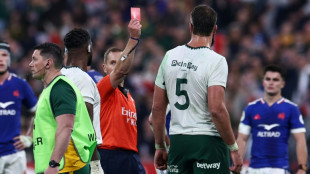
-
 Atletico, Villarreal win to keep pressure on Liga giants
Atletico, Villarreal win to keep pressure on Liga giants
-
Chelsea down Wolves to ease criticism of Maresca's rotation policy

-
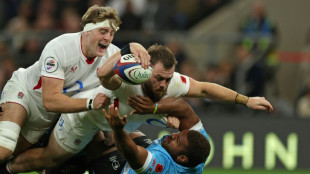 England's Genge eager to face All Blacks after Fiji win
England's Genge eager to face All Blacks after Fiji win
-
Wasteful Milan draw at Parma but level with Serie A leaders Napoli

-
 Fire kills six at Turkish perfume warehouse
Fire kills six at Turkish perfume warehouse
-
Djokovic pulls out of ATP Finals with shoulder injury

-
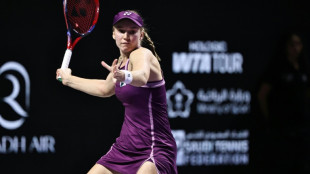 Rybakina outguns world No.1 Sabalenka to win WTA Finals
Rybakina outguns world No.1 Sabalenka to win WTA Finals
-
Norris survives a slip to seize Sao Paulo pole

-
 Sunderland snap Arsenal's winning run in Premier League title twist
Sunderland snap Arsenal's winning run in Premier League title twist
-
England see off Fiji to make it nine wins in a row

-
 Australia connection gives Italy stunning win over Wallabies
Australia connection gives Italy stunning win over Wallabies
-
Arsenal winning run ends in Sunderland draw, De Ligt rescues Man Utd

-
 Griezmann double earns Atletico battling win over Levante
Griezmann double earns Atletico battling win over Levante
-
Title-leader Norris grabs Sao Paulo Grand Prix pole

-
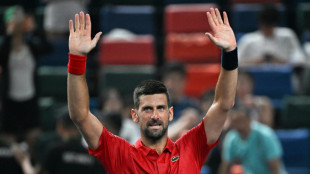 Djokovic edges Musetti to win 101st career title in Athens
Djokovic edges Musetti to win 101st career title in Athens
-
Rybakina downs world No.1 Sabalenka to win WTA Finals

-
 McKenzie ends Scotland dream of first win over New Zealand
McKenzie ends Scotland dream of first win over New Zealand
-
McKenzie stars as New Zealand inflict heartbreak upon Scotland

-
 De Ligt rescues Man Utd in Spurs draw, Arsenal aim to extend lead
De Ligt rescues Man Utd in Spurs draw, Arsenal aim to extend lead
-
Kane saves Bayern but record streak ends at Union

-
 Bolivia's new president takes over, inherits economic mess
Bolivia's new president takes over, inherits economic mess
-
Edwards set for Wolves job after Middlesbrough allow talks

-
 COP30: Indigenous peoples vital to humanity's future, Brazilian minister tells AFP
COP30: Indigenous peoples vital to humanity's future, Brazilian minister tells AFP
-
Marquez wins Portuguese MotoGP sprint race

-
 Saim, Abrar star in Pakistan's ODI series win over South Africa
Saim, Abrar star in Pakistan's ODI series win over South Africa
-
Norris extends title lead in Sao Paulo GP sprint after Piastri spin

-
 Man Utd have room to 'grow', says Amorim after Spurs setback
Man Utd have room to 'grow', says Amorim after Spurs setback
-
Tornado kills six, wrecks town in Brazil

-
 Norris wins Sao Paulo GP sprint, Piastri spins out
Norris wins Sao Paulo GP sprint, Piastri spins out
-
Ireland scramble to scrappy win over Japan


Ozone-depleting CFCs hit record despite ban: study
Their power to dissolve the ozone layer shielding Earth from the Sun prompted a worldwide ban, but scientists on Monday revealed that some human-made chlorofluorocarbons have reached record levels, boosting climate-changing emissions.
Despite being banned under the Montreal Protocol, the five chlorofluorocarbons (CFCs) measured increased rapidly in the atmosphere from 2010 to 2020, reaching record-high levels in 2020, according to the study published in the journal Nature Geoscience.
It said the increase was probably due to leakage during the production of chemicals that are meant to replace CFCs, including hydrofluorocarbons (HFOs).
Although at current levels they do not threaten the recovery of the ozone layer, they contribute to a different threat, joining other emissions in heating the atmosphere.
"If you are producing greenhouse gases and ozone-depleting substances during the production of these next-generation compounds, then they do have an indirect impact on the climate and the ozone layer," said co-author Isaac Vimont of the Global Monitoring Laboratory at the US National Oceanic and Atmospheric Administration.
CFCs are potent greenhouse gases that trap heat up to 10,000 times more efficiently than carbon dioxide -- the biggest cause of the global warming that drives climate change, according to data from the Global Carbon Project.
In the 1970s and 1980s, CFCs were widely used as refrigerants and in aerosol sprays.
But the discovery of the hole in the ozone layer over Antarctica as a result of their use led to the global agreement in 1987 to eliminate them.
After the Montreal Protocol entered into force, global concentrations of CFCs declined steadily.
- Ozone 'early warning' -
The study analysed five CFCs with no or few current uses, beginning at the point of their total global phase-out in 2010.
In 2020 all five gases were at their highest abundance since direct measurements began.
Those emissions have so far resulted in a modest impact on the ozone layer and slightly larger climate footprint, said co-author Luke Western of Bristol University and the Global Monitoring Laboratory.
They are equivalent to the 2020 CO2 emissions of Switzerland -- about one percent of the total greenhouse gas emissions of the United States.
But if the rapid upward trend continues, their impact will increase.
The researchers called their findings "an early warning" of a new way in which CFCs are endangering the ozone layer.
The emissions are likely due to processes that are not subject to the current ban and unreported uses.
The class of industrial aerosols developed to replace those banned by the Montreal Protocol is to be phased out over the next three decades under a recent amendment to the 1987 treaty.
- Unknown source -
The protocol curbs the release of ozone-depleting substances that could disperse, but does not ban their use in the production of other chemicals as raw materials or by-products.
It was not the first time that unreported production had an impact on CFC levels. In 2018 scientists discovered that the pace of CFC slowdown had dropped by half from the preceding five years.
Evidence in that case pointed to factories in eastern China, the researchers said. Once CFC production in that region stopped, the draw-down appeared to be back on track.
The study said further research was needed to know the precise source of the recent rise in CFC emissions.
Nationwide data gaps make it difficult to determine where the gases are coming from and for some of the CFCs analysed there are no known uses.
But "eradicating these emissions is an easy win in terms of reducing greenhouse gas emissions," said Western.
M.Thompson--AMWN



